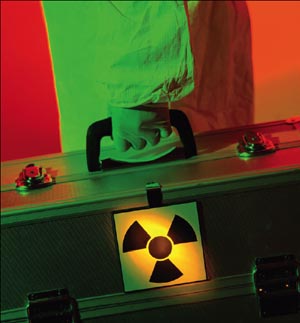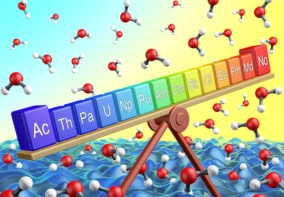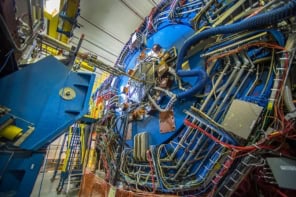Replacing the UK's Trident nuclear-weapons system would divert the country's declining workforce of physical scientists from tackling global threats such as climate change, argues Stuart Parkinson

This month the UK parliament will vote on one of the most important defence issues the country has faced: whether or not to replace its Trident nuclear-weapons system when it reaches the end of its lifetime some 20 years from now. Britain, along with the US, Russia, China and France, is one of the original nuclear powers, having first exploded a nuclear bomb in 1953. A decision in favour of replacing Trident would mean the UK retaining its nuclear capability into the 2040s. But there are strong arguments against such a decision, a move that would set in motion the UK’s eventual departure from the nuclear club.
Opponents to renewing Trident tend to base their case on two issues: security, arguing that a replacement system would seriously damage international arms control; and economics, focusing on the huge investment (about £20bn) and annual operating costs (almost £2bn) of replacing Trident that could be better spent on other areas. But there is a third case against replacing Trident: that it could divert people with vital skills, such as physical scientists and engineers, away from more beneficial and urgent technology-based areas like tackling climate change.
The Trident nuclear-weapons system, which was phased in from 1994, has three main components: the launch platform, the missiles and the warheads. The launch platform is made up of four nuclear-powered Vanguard-class submarines, each of which can carry up to 16 Trident ballistic missiles. A single missile is allowed to carry up to three warheads, each packing a punch of about 100 kilotonnes or eight times the destructive power of the Hiroshima bomb. The UK’s stockpile of nuclear warheads is currently a little under 200. Of the current system, the submarines and warheads are British but the missiles are leased from the US, which also uses submarine-based Trident missiles as part of its own nuclear capability.
The government maintains that a decision about replacing Trident needs to be taken now because the submarines that currently carry the weapons will start reaching the end of their serviceable lives from the early 2020s, and because we need enough time to design and build a successor. In its White Paper on a Trident replacement published in December last year, the government proposes that a new fleet of submarines should be designed and built (at the BAE Systems shipyards in Barrow, Cumbria) and that these would carry the US-leased Trident missiles mounted with warheads maintained by the Atomic Weapons Establishment (AWE) at Aldermaston in Berkshire.
The problem is that in order to both maintain the current Trident system and deliver a replacement, the nuclear-weapons sector – which includes the AWE, much of the UK submarine industry and a number of smaller companies – would need to recruit a large number of engineers and physical scientists in order to replenish the current aging workforce and to meet the demands of expansion. Several thousand such people are likely to be required.
Physicists would be especially important for work on the nuclear-warhead programmes at AWE and also for developing the nuclear reactors to power the new submarines, which very likely would be built by Rolls Royce. Indeed, AWE has already started a major recruitment drive as it installs a new laser facility, supercomputer and hydrodynamics laboratory. Many, not least the Defence Committee of the House of Commons, have criticized the decision to start building these new facilities in advance of a parliamentary verdict on a Trident replacement.
Supply and demand
Government ministers and industry chiefs have long been concerned about whether enough physical scientists and engineers are being trained in order to support UK industry in general. For example, there is a major concern in the nuclear and radiological sector – both military and civilian – about the rapidly growing decommissioning workload. Nine nuclear power stations are already being or are about to be decommissioned, while seven more are planned to close over the next 11 years. In addition, four nuclear-powered Swiftsure-class submarines are being (or are about to be) retired.
In 2002 a report from the government’s Department for Trade and Industry (DTI) sounded the alarm over this situation, pointing out that the workforce was aging, that industry was finding it hard to recruit new staff and that there were already skills shortages in some key areas. The report estimated that the nuclear and radiological sector needed to recruit about 50,000 new staff over the following 15 years just to deal with the planned workload. Since then, the government has opened the door to a new generation of nuclear power stations – perhaps six or more – based on a design not yet commissioned anywhere in the world. And now we have the impending decision on Trident’s replacement. This is an awful lot of new staff to recruit over quite a short time period, and will lead to significant competition between the civil and military industries for new recruits.
Meanwhile, other fields are also clamouring for physical scientists. The urgent threat of climate change, for instance, has triggered a range of technological initiatives to assist in the transition to a low-carbon economy. In addition to new nuclear power stations, the UK government is pushing for a rapid expansion of the renewable-energy sector – with a 2004 DTI report projecting a workforce expansion of as much as 27,000 by 2020. In addition, other technologies such as carbon capture and storage, and hydrogen-powered fuel cells are also being strongly encouraged. Physicists are in demand in all these areas, not least to develop efficient solar photovoltaic cells.
But there are serious doubts about whether there are enough new physical scientists and engineers coming up through the ranks to supply this demand. For example, the number of UK pupils studying A-level physics fell by 34% between 1991 and 2004, which led to a 26% drop in the numbers of UK students taking degrees in the physical sciences and engineering. Although the number of physics undergraduates is now stabilizing, the problem is exacerbated by the closure of 18 university physics departments in the last 10 years. A further restriction for the nuclear industry is that, for obvious security reasons, some jobs are only open to UK citizens. Indeed, the government has recently decided to put foreign postgraduates studying nuclear physics in the UK through tough new security checks to prevent them gaining knowledge that could be used in the proliferation of nuclear weapons.
Unhealthy competition
It is clear that if Trident is replaced – a decision that seems likely – we will have a large and increasing demand for physical scientists and engineers yet falling numbers qualifying in these disciplines. Competition between sectors will be inevitable. Some people will argue that this is healthy, but it will not be so welcome if staff shortages delay the replacement project and lead to spiralling costs. Moreover, such competition could lead to skills shortages that slow our technological response to climate change. Global warming is such a major, scientifically well-established threat and the switch to a low-carbon economy so urgent that it would be foolish indeed to compromise this for the sake of a new nuclear-weapons system that even former defence ministers are not convinced would contribute to UK and global security.
The government, in conjunction with industry, has recently begun reorganizing a number of science and technology teaching programmes to make them more effective with aim of expanding the “skills base”. But given the figures involved, it really is a tall order to expect that such efforts will be enough for all these major technological programmes to happen together. There is also a further potential problem with this approach: some young people could be deterred from studying the physical sciences because of the continued close association between these subjects and unsavoury military projects such as the development of nuclear warheads, which are in essence weapons of mass destruction. For example, a recent survey of young people’s attitudes towards a career in science carried out by the Nestlé Social Research Programme revealed that girls were just as interested as boys, but that girls were rather more likely to be put off by ethical concerns.
Many have argued that a decision to replace Trident – at a time when the UK is safer from large-scale military attack than at any period in its history – would be misguided. Worse, that it would seriously undermine global efforts to convince other nations not to go down the road to nuclear weapons. Once the enormous price tag is factored in – the cost of replacing Trident could, for example, more than completely pay for all of the UK’s 16 million badly insulated homes to be raised to the latest energy-efficiency standards – the argument to retain a nuclear-weapons system becomes even more suspect. Add to that the shortage of physical scientists and engineers, at a time when they are so urgently needed in many other areas such as tackling climate change, and the case for replacing Trident becomes completely untenable.



